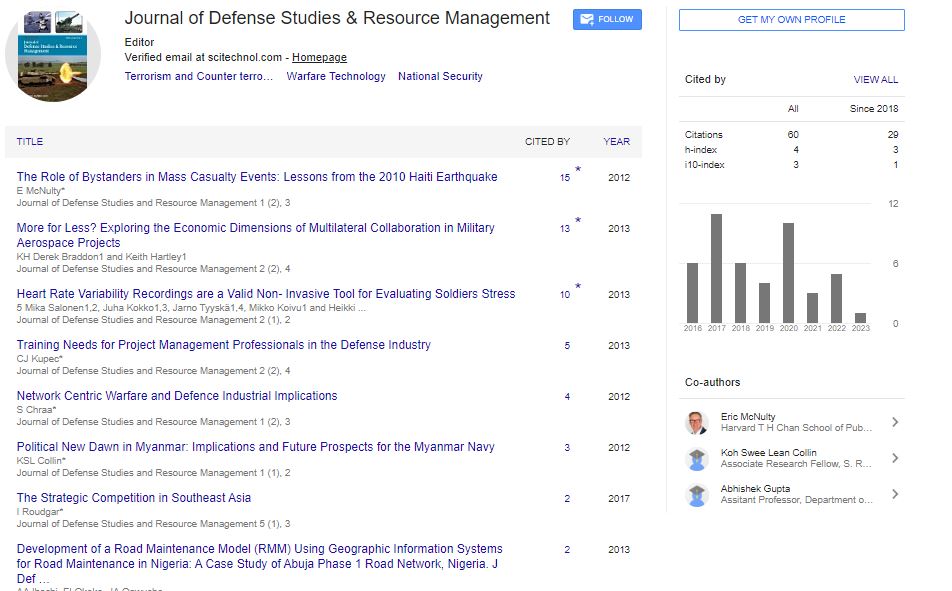Editorial, J Def Stud Resour Manage Vol: 9 Issue: 1
Advancements and Technologies Involved in Warfare
Edward*
Department of Political Sciences, Northwestern University, United States
*Corresponding Author: Edward Department of Political Sciences, Northwestern University, United States, E-Mail: edwar67@gmail.com
Received: 05 November, 2021; Accepted: 19 November, 2021; Published: 26 November, 2021
Introduction
Technology has always been a major factor in the development of military equipment. Technology has played a vital role in the war effort. With ever-changing technologies and advances the changes in warfare are even greater.
Technological change will not be the same in its global impact but will play a different role depending on its acceptance, investment and various issues such as bioethics, privacy, economic inequality, cultural attacks and social reactions. Armed forces by the year 2025 will achieve unprecedented speed of strategy and operation by exploiting information technology to build a knowledge-based organization. The result of the collection will be a dynamic, full-fledged, energy-based force that can respond appropriately to any future global emergencies.
Rapid technological changes in energy sources, building materials, transportation, transformation, in the wars that participated in the reforms. Unusual weapons systems depend on the effective use of scientific and technological values. Military management has been transformed, due to the complexity and cost of new technologies, as well as awareness of public considerations. At the university, disciplinary boundaries that have divided different fields of science and engineering have become increasingly clear in the Pentagon, when the armed forces lost their unique mission. Non-profit institutions have changed the environment and the direction of scientific and technological work. The military has led to the establishment of research and development. Military technology abolished American free and complete security, and soldiers now have to rely heavily on technology for conditional, and costly security. The first postwar strategy was focused on controlling the atomic bomb. Since then, the strategy has become more complex, seeking to meet a myriad of threats. It is not only in the upper part of the sector that technology used in the wars. Weapons of mass destruction are often quite complex.
The history of war goes back to the days of early human civilization. Today arms and ammunition have come a long way from the mere use of spears, bows and arrows to high-tech military equipment. Advances in technology have led to the development and use of nuclear weapons, aeronautics, aircraft art, missiles, laser-guided weapons, submarines, drones, and so on.
Weapons have changed over the years as well as the way they are used. In the old days a bow and arrow were the common weapons used to fight the enemy and to shoot an arrow at that particular person or to throw a spear through a particular object or person. Soon, weapons and shields have slowed down the use of arrows that encouraged people to build new military equipment.
Today, technology has become more precise and dangerous. Cruise arrows, which can strike with precision are now given great importance. Today's military equipment is so advanced that one cannot even imagine how war will be fought in the future. As a growing number of weapons of mass destruction are gaining on the upper hand, they have now promoted the need to develop smaller, faster, and more efficient machines to avoid any enemy attack.
Acknowledgement
None
Conflict of Interest
None
 Spanish
Spanish  Chinese
Chinese  Russian
Russian  German
German  French
French  Japanese
Japanese  Portuguese
Portuguese  Hindi
Hindi 